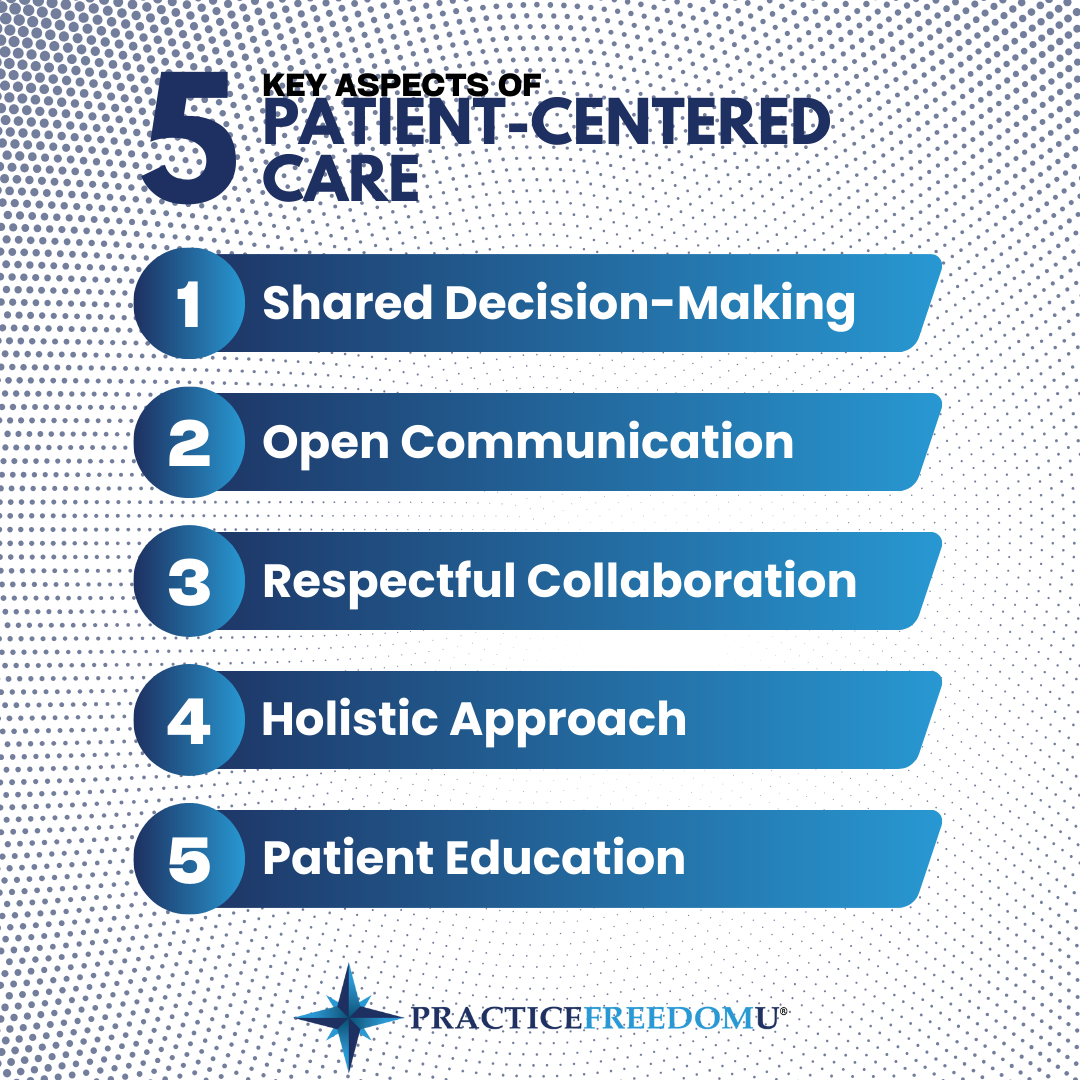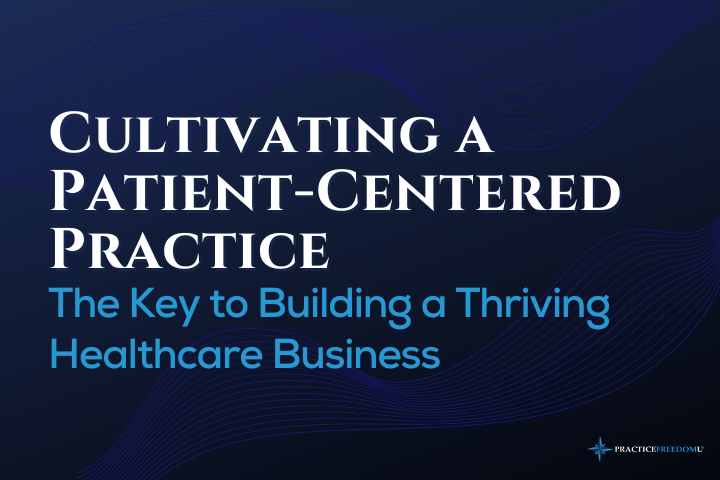Imagine this: a patient walks into your practice feeling valued, heard, and empowered to participate in their healthcare journey. This isn’t a fantasy – it’s the cornerstone of a patient-centered practice, an approach demonstrably linked to improved patient satisfaction, loyalty, and ultimately, a thriving business.
As the healthcare industry evolves, fostering a positive patient experience isn’t just a nicety, it’s a strategic imperative (Harvard Business Review). Patients increasingly demand transparency, collaboration, and a sense of control over their health decisions. By prioritizing patient-centered care, you can create a practice that not only delivers exceptional care but also attracts and retains patients, leading to a more fulfilling and successful career for you.
What is Patient-Centered Care?
Patient-centered care, also known as person-centered care, moves away from the traditional doctor-as-director model. It recognizes the unique needs, preferences, and values of each patient, fostering a collaborative approach to healthcare (World Health Organization). Here are some key aspects:

Shared Decision-Making
Patients are actively involved in developing treatment plans, ensuring they understand their options and feel empowered to make informed choices.
Open Communication
Clear and two-way communication is paramount. You actively listen to patients’ concerns and questions, fostering trust and a sense of partnership.
Respectful Collaboration
Patients are treated with dignity and respect at all levels, from the front desk to the examination room.
Holistic Approach
Care extends beyond the physical; emotional, social, and cultural factors are considered.
Patient Education
Patients are equipped with the knowledge they need to manage their health effectively.
Implementing Patient-Centered Care: Practical Steps
Transforming your practice into a patient-centered environment requires a strategic shift. Here are some actionable steps to get you started:
Prioritize Communication
Establish clear communication channels from the outset. This includes upfront information about appointment scheduling, billing practices, and insurance coverage. Ensure timely responses to inquiries and test results. Consider offering multiple communication channels, like secure online portals or text messaging, to cater to patient preferences. (National Library of Medicine)
Invest in Patient Education
Empower patients to be active participants in their healthcare by providing clear, accessible information about their condition, treatment options, and preventative measures. Utilize various formats such as handouts, online resources, or educational videos to accommodate different learning styles.
Embrace Technology
Technology can be a powerful tool for enhancing the patient experience. Explore online appointment scheduling, telehealth options for appropriate consultations, and patient portals that allow secure access to medical records and communication with your team.
Beyond the Basics: Building a Culture of Care
While the above steps lay a solid foundation, consider these additional elements to foster a genuine patient-centered culture:
Gather Patient Feedback
Regularly solicit feedback through surveys, focus groups, or informal conversations. Use this information to identify areas for improvement and tailor your approach to better meet patient needs.
Embrace Transparency
Be upfront about fees, treatment options, and potential outcomes. Encourage patients to ask questions and express concerns.
Focus on Comfort and Convenience
Create a welcoming environment with comfortable waiting areas. Offer flexible appointment scheduling and strive to minimize wait times.
The Positive Impact: A Win-Win Situation
By prioritizing a patient-centered approach, you’ll cultivate a practice environment that fosters:
Increased Patient Satisfaction
Happy patients are more likely to adhere to treatment plans, recommend your practice to others, and leave positive online reviews.
Improved Clinical Outcomes
Strong patient-provider relationships can lead to better communication, adherence to treatment plans, and ultimately, improved health results.
Enhanced Staff Morale
Working in a patient-centered environment can be more fulfilling for staff, leading to increased engagement and lower turnover.
A Thriving Practice
Loyal patients, positive word-of-mouth referrals, and a reputation for excellence can all contribute to a thriving, successful practice.
Creating a patient-centered practice isn’t merely about good intentions; it’s a strategic investment in the future of your practice. By prioritizing patients and fostering a culture of care, you’ll create a win-win situation for both your patients and your business, paving the way for a more fulfilling and successful healthcare journey.
————————————————————-
Are you ready for a coach? Join the hundreds of physical therapy owners who are building the practice of their dreams with the support, guidance and direction of a Practice Freedom U Coach. Take the first step towards creating a business that sets you free by scheduling a Discovery Call



